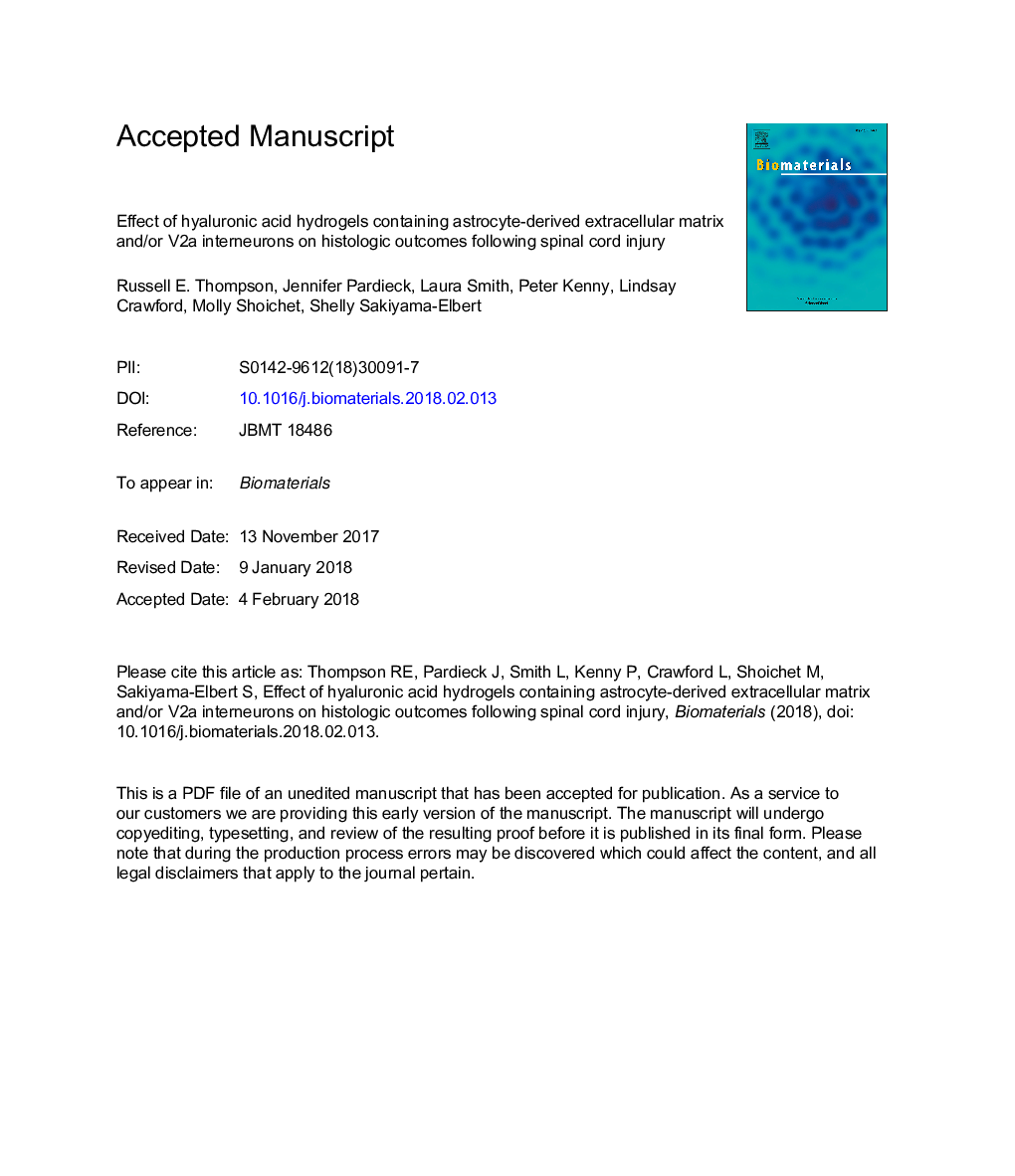| Article ID | Journal | Published Year | Pages | File Type |
|---|---|---|---|---|
| 6484617 | Biomaterials | 2018 | 51 Pages |
Abstract
One reason for the lack of regeneration, and poor clinical outcomes, following central nervous system (CNS) injury is the formation of a glial scar that inhibits new axon growth. In addition to forming the glial scar, astrocytes have been shown to be important for spontaneous SCI recovery in rodents, suggesting some astrocyte populations are pro-regenerative, while others are inhibitory following injury. In this work, the effect of implanting hyaluronic acid (HA) hydrogels containing extracellular matrix (ECM) harvested from mouse embryonic stem cell (mESC)-derived astrocytes on histologic outcomes following SCI in rats was explored. In addition, the ability of HA hydrogels with and without ECM to support the transplantation of mESC-derived V2a interneurons was tested. The incorporation of ECM harvested from protoplasmic (grey matter) astrocytes, but not ECM harvested from fibrous (white matter) astrocytes, into hydrogels was found to reduce the size of the glial scar, increase axon penetration into the lesion, and reduce macrophage/microglia staining two weeks after implantation. HA hydrogels were also found to support transplantation of V2a interneurons and the presence of these cells caused an increase in neuronal processes both within the lesion and in the 500â¯Î¼m surrounding the lesion. Overall, protoplasmic mESC-derived astrocyte ECM showed potential to treat CNS injury. In addition, ECM:HA hydrogels represent a novel scaffold with beneficial effects on histologic outcomes after SCI both with and without cells.
Related Topics
Physical Sciences and Engineering
Chemical Engineering
Bioengineering
Authors
Russell E. Thompson, Jennifer Pardieck, Laura Smith, Peter Kenny, Lindsay Crawford, Molly Shoichet, Shelly Sakiyama-Elbert,
